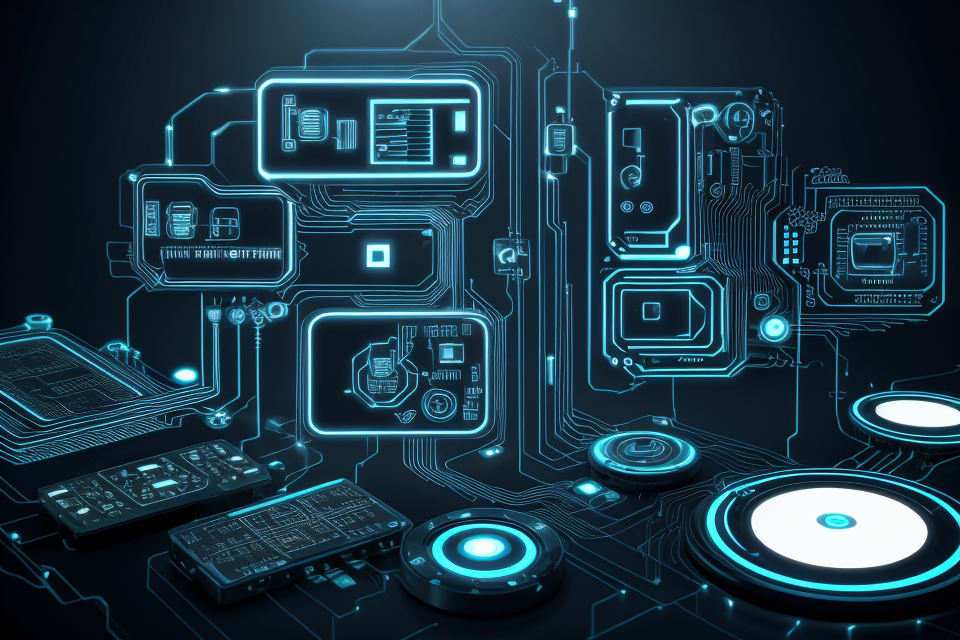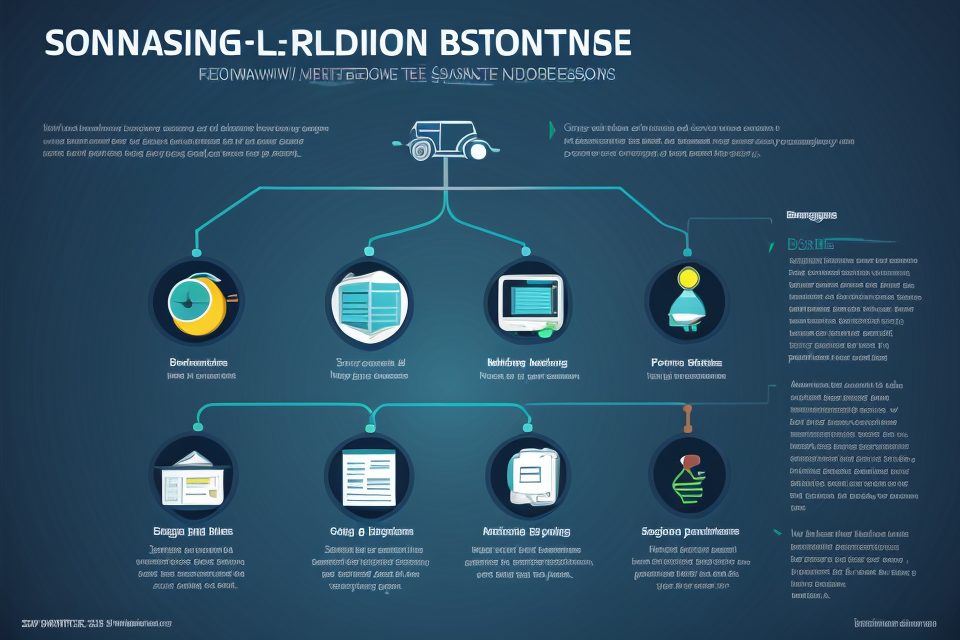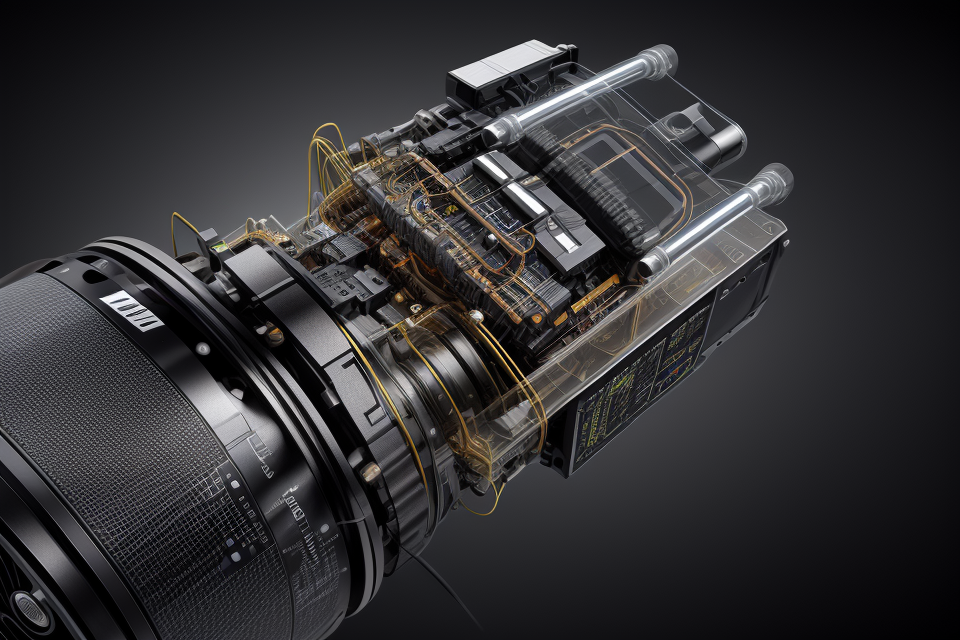
Sensors are devices that detect and respond to physical inputs, transforming them into digital signals that can be interpreted by electronic systems. They play a crucial role in our daily lives, from simple tasks like turning on a light switch to complex operations like monitoring the performance of industrial machinery. But the question remains, are sensors considered electronics? In this article, we’ll explore the world of sensors and their relationship with electronics, examining their function, design, and applications in various industries. Get ready to discover how these amazing devices bring our electronic devices to life!
Sensors are devices that detect and respond to physical inputs, such as light, heat, motion, and pressure. They play a crucial role in the world of electronics by providing real-time data and enabling machines to interact with their environment. Sensors are used in a wide range of applications, from simple household appliances to complex industrial systems. They can be integrated into circuits, embedded in devices, or used as standalone components. By converting physical signals into electrical signals, sensors allow electronic systems to make informed decisions, automate processes, and enhance user experiences.
What are Sensors?
Types of Sensors
There are several types of sensors that are commonly used in the world of electronics. Each type of sensor is designed to detect a specific type of physical phenomenon, and they play a crucial role in enabling devices to gather information about their environment. Here are some of the most common types of sensors:
Mechanical sensors
Mechanical sensors are designed to detect physical movements or displacements. They are commonly used in applications such as robotics, automation, and machine control. Some examples of mechanical sensors include accelerometers, which measure changes in velocity, and strain gauges, which measure changes in pressure or tension.
Thermal sensors
Thermal sensors are designed to detect changes in temperature. They are commonly used in applications such as HVAC systems, food processing, and medical devices. Some examples of thermal sensors include thermocouples, which measure the temperature difference between two points, and infrared sensors, which detect the infrared radiation emitted by objects.
Electrical sensors
Electrical sensors are designed to detect changes in electrical signals. They are commonly used in applications such as automation, control systems, and testing equipment. Some examples of electrical sensors include potentiometers, which measure changes in electrical resistance, and Hall effect sensors, which measure changes in magnetic fields.
Optical sensors
Optical sensors are designed to detect changes in light. They are commonly used in applications such as machine vision, surveillance, and biomedical research. Some examples of optical sensors include photodiodes, which convert light into electrical signals, and CCDs (charge-coupled devices), which capture images.
Magnetic sensors
Magnetic sensors are designed to detect changes in magnetic fields. They are commonly used in applications such as navigation, position sensing, and data storage. Some examples of magnetic sensors include magnetoresistive sensors, which measure changes in magnetic fields, and Hall effect sensors, which measure changes in magnetic fields.
In summary, there are many different types of sensors that are used in the world of electronics, each with its own unique set of applications and capabilities. Understanding the different types of sensors and their capabilities is essential for designing effective electronic systems.
How Sensors Work
Sensors are devices that convert physical phenomena, such as temperature, pressure, or light, into electrical signals that can be processed by electronic systems. The process of how sensors work can be broken down into three main stages: transduction, signal conditioning, and data processing.
Transduction
Transduction is the process of converting a physical quantity into an electrical signal. This is typically done using a physical phenomenon such as resistance, capacitance, or inductance. For example, a thermocouple uses the Seebeck effect to convert the temperature difference between two different metals into an electrical signal. Similarly, a strain gauge uses the deformation of a metal foil to produce an electrical signal that is proportional to the applied force.
Signal Conditioning
Once the physical quantity has been converted into an electrical signal, it needs to be conditioned to make it suitable for processing by electronic systems. This stage involves amplification, filtering, and converting the signal into a standard format. For example, a temperature sensor may produce a millivolt signal that needs to be amplified by a factor of 100 before it can be processed by a microcontroller. Signal conditioning also includes compensating for any drift or noise in the signal.
Data Processing
The final stage in the sensor signal processing chain is data processing. This involves extracting meaningful information from the electrical signal using algorithms and software. For example, a light sensor may produce a digital output that is interpreted by a microcontroller to adjust the brightness of an LED. Data processing can also involve communication with other devices, such as wireless transmission of sensor data to a cloud-based server for analysis.
Overall, the process of how sensors work involves transducing a physical quantity into an electrical signal, conditioning the signal to make it suitable for processing, and extracting meaningful information from the signal using data processing techniques. By understanding this process, engineers can design better sensor systems that meet the needs of various applications.
The Role of Sensors in Electronics
How Sensors are Used in Electronics
Consumer Electronics
Sensors are an integral part of many consumer electronics devices. For example, in smartphones, sensors such as accelerometers, gyroscopes, and proximity sensors are used to enable features like fitness tracking, augmented reality, and automatic screen brightness adjustment. In addition, sensors like touch sensors, temperature sensors, and humidity sensors are used in various consumer electronics products like smart home devices, wearables, and smart appliances to provide a range of functionality, including remote control, energy efficiency, and safety features.
Industrial Electronics
In industrial electronics, sensors play a critical role in monitoring and controlling processes. For instance, sensors like pressure sensors, flow sensors, and temperature sensors are used in manufacturing and processing industries to ensure optimal performance and efficiency. Sensors also help in detecting potential issues or failures before they become major problems, enabling predictive maintenance and reducing downtime. In addition, sensors like light sensors and motion sensors are used in security systems to detect intrusion or other activities.
Medical Electronics
Sensors are essential in medical electronics for monitoring and diagnosing various conditions. For example, sensors like electrocardiogram (ECG) sensors, blood pressure sensors, and glucose sensors are used in medical devices to measure vital signs and provide real-time data to healthcare professionals. In addition, sensors like motion sensors and activity sensors are used in rehabilitation and fitness applications to track progress and improve patient outcomes.
Automotive Electronics
Sensors are widely used in automotive electronics to enhance safety, efficiency, and performance. For example, sensors like speed sensors, accelerometers, and GPS sensors are used in various automotive systems like cruise control, lane departure warning, and navigation. In addition, sensors like temperature sensors, pressure sensors, and air quality sensors are used in vehicle management systems to monitor and control various functions, including engine performance, brake systems, and climate control.
Overall, sensors are a key component of modern electronics and play a crucial role in enabling a wide range of applications across various industries.
Advantages of Using Sensors in Electronics
- Increased Efficiency
Sensors enable electronics to function more efficiently by providing real-time data about the environment, which can be used to optimize energy consumption. For example, in a smart home, sensors can detect when a room is unoccupied and adjust the lighting and temperature accordingly, reducing energy waste. - Improved Accuracy
Sensors offer greater accuracy compared to traditional methods, as they can provide precise measurements and readings. This is particularly important in fields such as medicine, where accurate measurements can mean the difference between life and death. Sensors can also improve the accuracy of data collection in industries such as agriculture, where precision farming techniques are becoming increasingly popular. - Enhanced Safety
Sensors can help enhance safety in a variety of settings. For example, in the automotive industry, sensors can detect potential hazards such as obstacles or other vehicles, enabling cars to brake automatically to prevent accidents. In the workplace, sensors can detect potential hazards such as gas leaks or fire, alerting employees and preventing accidents. - Greater Flexibility
Sensors enable electronics to be more flexible and adaptable to changing environments. For example, sensors can be used to adjust the settings of a washing machine based on the size and type of load, ensuring that clothes are cleaned effectively. Sensors can also be used in robots to enable them to navigate and adapt to changing environments, making them more versatile and useful in a variety of settings.
Applications of Sensors in Electronics
Examples of Sensor Applications in Electronics
Sensors are essential components in modern electronics and are used in a wide range of applications. Some examples of sensor applications in electronics include:
- Robotics: Sensors are widely used in robotics to help robots perceive and interact with their environment. For example, sensors such as range finders, sonar, and infrared sensors are used to help robots navigate and avoid obstacles. Other sensors such as temperature and humidity sensors are used to help robots operate in different environments.
- Internet of Things (IoT): The Internet of Things (IoT) is a network of interconnected devices that can collect and exchange data. Sensors play a critical role in IoT by providing the data that powers these devices. For example, sensors such as temperature, humidity, and motion sensors are used in smart homes to monitor and control various aspects of the home environment.
- Automated Doors: Sensors are used in automated doors to detect when a person or object is present, and then automatically open or close the door. For example, infrared sensors are used in automatic doors to detect when a person approaches the door, and then open the door to allow them to pass through.
- Smart Homes: Sensors are used in smart homes to automate various tasks and make the home more convenient to live in. For example, motion sensors are used to automatically turn on the lights when a person enters a room, and then turn off the lights when the person leaves the room. Other sensors such as temperature and humidity sensors are used to help regulate the home environment.
Future Sensor Applications in Electronics
Sensors are a critical component in modern electronics, and their applications are vast and varied. One area where sensors are expected to play an increasingly important role is in the development of future technologies. Here are some examples of future sensor applications in electronics:
Wearable Technology
Wearable technology is a rapidly growing field that includes devices such as smartwatches, fitness trackers, and health monitors. These devices typically use sensors to collect data about the user’s activity level, heart rate, and other vital signs. As wearable technology continues to evolve, we can expect to see more sophisticated sensors that can monitor a wider range of health metrics, such as blood sugar levels and sleep patterns.
Self-Driving Cars
Self-driving cars are becoming increasingly common, and they rely heavily on sensors to navigate their environment. These sensors include cameras, lidar, and radar, which allow the car to detect obstacles, other vehicles, and pedestrians. As self-driving cars become more prevalent, we can expect to see more advanced sensor systems that can detect even more subtle changes in the environment, such as road conditions and weather patterns.
Smart Cities
Smart cities are urban areas that use technology to improve the quality of life for residents. One key component of smart cities is the use of sensors to collect data about traffic flow, air quality, and other environmental factors. This data can be used to optimize traffic patterns, reduce pollution, and improve public safety. As smart cities continue to develop, we can expect to see more sensors deployed in public spaces, including streets, parks, and buildings.
Augmented Reality
Augmented reality (AR) is a technology that overlays digital information onto the real world. This is typically achieved using sensors such as cameras and GPS to track the user’s location and orientation. As AR technology continues to improve, we can expect to see more sophisticated sensors that can accurately track the user’s movements and provide more immersive experiences.
Overall, sensors are a critical component of many future electronic applications, and their importance is only likely to increase in the coming years. As sensor technology continues to advance, we can expect to see more innovative uses for these devices, leading to new and exciting developments in fields such as wearable technology, self-driving cars, smart cities, and augmented reality.
FAQs
1. What are sensors?
Sensors are devices that detect and respond to physical inputs, such as light, heat, motion, and pressure. They convert these inputs into electrical signals that can be measured and processed by electronic devices.
2. Are sensors considered electronics?
Yes, sensors are considered a type of electronics. They are made up of electronic components, such as transistors, diodes, and resistors, which are used to detect and process physical inputs.
3. What are some examples of sensors?
There are many types of sensors, including temperature sensors, light sensors, motion sensors, pressure sensors, and humidity sensors. These sensors are used in a wide range of applications, from home automation systems to industrial control systems.
4. How do sensors fit into the world of electronics?
Sensors play a crucial role in the world of electronics. They are used to detect and measure physical inputs, which are then used to control and automate electronic systems. For example, a temperature sensor might be used to turn on a heater or air conditioner, while a motion sensor might be used to activate a security alarm.
5. What are some common applications of sensors in electronics?
Sensors are used in a wide range of electronic devices, including smartphones, smart homes, and industrial control systems. They are also used in automotive systems, medical devices, and environmental monitoring systems.
6. What are some challenges associated with using sensors in electronics?
One challenge associated with using sensors in electronics is ensuring that they are accurate and reliable. Another challenge is designing electronic systems that can interface with a wide range of sensors, which may have different output formats and sensitivity levels. Additionally, sensors can be susceptible to interference and noise, which can affect their performance.


